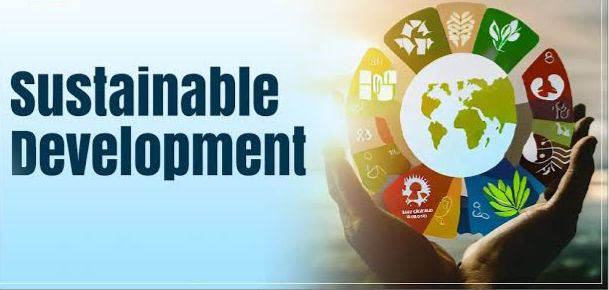Sustainable Development: A Vision for a Balanced Future
In an era of rapid industrialization and environmental challenges, **sustainable development** stands as a guiding principle to ensure progress that is inclusive, equitable, and ecologically responsible. It emphasizes meeting present needs without compromising the ability of future generations to meet their own. This multi-dimensional approach weaves together economic growth, social inclusion, and environmental stewardship.
Key Aspects of Sustainable Development.
1. Balancing Economic Growth with Environmental Protection.
* Promotes infrastructure and industrial growth while conserving natural resources.
* Encourages green technologies and sustainable production systems.
2. Social Equity and Justice.
* Ensures that development benefits are distributed fairly across all social groups.
* Empowers marginalized and underrepresented communities.
3. Environmental Preservation.
* Protects ecosystems, biodiversity, and natural resources.
* Prevents degradation through regulations, education, and conservation efforts.
4. Sustainable Urbanization.
* Advocates for smart cities that are energy-efficient, resilient, and people-centric.
* Encourages public transport, green buildings, and open spaces.
5. Climate Change Mitigation and Adaptation.
* Reduces greenhouse gas emissions and fosters renewable energy use.
* Builds resilience against climate-related disasters.
6. Technological Innovation.
* Embraces innovations that drive efficiency and reduce environmental impact.
* Supports research in clean energy, water management, and sustainable agriculture.
The Four Pillars of Sustainability
1. Human Sustainability.
* Invests in education, healthcare, skills development, and well-being.
* Focuses on improving the quality of life and individual empowerment.
2. Social Sustainability
* Strengthens social cohesion, equity, cultural identity, and community participation.
* Promotes peace, diversity, and ethical governance.
3. Economic Sustainability.
* Ensures long-term economic viability and financial stability.
* Encourages responsible consumption, fair trade, and job creation.
4. Environmental Sustainability.
* Protects air, water, soil, and biodiversity for future generations.
* Aligns development goals with ecological balance and natural resource limits.
---
Major Goals of Sustainable Development .
The United Nations Sustainable Development Goals (SDGs) provide a comprehensive blueprint comprising 17 global objectives to be achieved by 2030. Key goals include:
-No Poverty- and -Zero Hunger
-Quality Education- and -Good Health
-Clean Water and Sanitation
-Affordable and Clean Energy
-Decent Work and Economic Growth
-Sustainable Cities and Communities
-Climate Action and Life Below Water/Land
-Peace, Justice, and Strong Institutions.
These goals aim to harmonize human aspirations with environmental and social realities.
–Why Sustainable Development Matters.
-Secures the future- by addressing today’s global challenges holistically.
-Reduces inequalities- and fosters inclusive progress.
-Promotes innovation- and long-term competitiveness.
-Combats environmental degradation- and promotes resilience.
—
Conclusion.
Sustainable development is not just a policy agenda — it is a moral and strategic imperative for humanity. By embracing its principles, we can create a world that thrives economically, protects nature, and uplifts every individual. As global citizens, it is our responsibility to act consciously, consume responsibly, and build inclusively.
